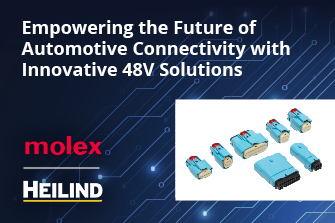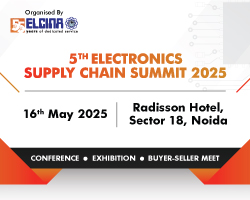Interviewer: Luke Getto, Director of Product Management at VoltServer.
VoltServer’s patented, “Digital Electricity™ ” is a safer and more efficient way to run power across long distances . They are revolutionizing the way smart buildings, stadiums and vertical farms are wired today. Digital Electricity is an intelligent power distribution platform that offers the power capabilities of AC power with the economics and wiring practices of Ethernet.
Luke talks about how this is being used today, the impact on the future and potential new opportunities .
Q: Could you please introduce Vicor-Voltserver partnership?
A: Vicor has worked closely with VoltServer since it began product development, providing highly efficient power-conversion technology with thermally-adept packaging to support passive cooling in a compact fashion. Vicor provides the power efficiency that allows the VoltServer Digital Electricity™ receivers to be placed in tight, enclosed spaces that are too small to permit the use of cooling fans. This allows the VoltServer platform to operate more efficiently with much smaller heat sinks and to significantly shrink the receiver footprint.
Q: Can you give us a brief introduction to Digital Electricity (DE)?
A: Digital Electricity™ (DE) is a line-powering system, which is a means of energizing remote equipment from a centralized location over structured copper cable. It safely runs high-voltage power over lightweight data cable and delivers low current downstream to power loads. It’s a natively digital form of electricity transmission that can be considered a third power format in addition to the AC and DC formats that were first harnessed nearly 150 years ago. VoltServer DE technology takes conventional electricity and breaks it into small pulses, or “energy packets.” Each packet is sent to a receiver from a transmitter that contains local, embedded processing capability.

Figure 1 VoltServer leverages a patented packet energy transfer to deliver significant power over long distances. The technology splits energy into packets and transfers hundreds of packets each second from a transmitter to a receiver. Safety is continuously monitored. The result is safe, efficient energy transfer over long distances. VoltServer products are listed and certified to safety and EMC standards by a nationally recognized test laboratory.
Q: Is Digital Electricity safe and cost efficient to use?
Each DE energy packet is analyzed using a digital signal processing engine to determine that power is being precisely and safely distributed. If a fault is detected, the next energy packet is not sent. Each packet contains only a very small amount of energy, so individually they are not harmful to people, animals, systems or buildings. The receiver converts DE back into analog AC or DC to power local loads. What’s unique about DE is that it delivers the high-power characteristics of AC power and the safety characteristics of low voltage so it can be run in the same pathways as fiber optic communications, making it much easier and economical to install than conventional electrical systems.
Q: Are there other benefits to using DE?
A: Because of its inherently safe energy-transfer design, the VoltServer DE platform can send power over a distance up to 2,000 meters using off-the-shelf structured copper communications cable and Class 2, low-voltage wiring methods. Similar to power-over-Ethernet (PoE), this enables VoltServer to piggyback on data pathways instead of requiring dedicated pathways using conduit or armored cable. By transporting both digital data and power in a hybrid cabling infrastructure, the single cable can be deployed faster, easier and more cost effectively than ever before.
Q: Can you tell us in detail about the Vicor BCM6123 fixed-ratio bus converter?
A: The compact Vicor BCM6123 fixed-ratio bus converter (0.99 x 2.402 x 0.286in) is in the endpoint receiver to efficiently convert high-voltage power to various loads. The Vicor BCM® uses a proprietary, low-noise, high-efficiency Sine Amplitude Converter (SAC™) topology that requires little electromagnetic filtration. This further shrinks the power system footprint and reduces cooling requirements, which lowers total cost of ownership by reducing power losses. Using Vicor converters, VoltServer has lowered heat loss by 43 percent and reduced the size of the heat sink.

Figure 2 Vicor ruggedized, passively-cooled BCM6123 DC-DC fixed-ratio bus converters are designed into the VoltServer receivers to transform higher voltage to low voltage loads. The BCM® is up to 97% efficient and has reduced heat loss for VoltServer by 43% compared to conventional converters.
Q: What applications are you focused on in 2022?
A: DE is used in applications that require wireless densification to provide power for 4G LTE, 5G and Wi-Fi radios that are optimally located for coverage and capacity with class-five high availability, or “five nines” reliability. This includes hundreds of marquee venues including stadiums, airports, convention centers, office towers, hotels, condominiums and hospitals. Another core application is smart buildings where VoltServer provides a centralized digital power architecture for business-critical IT and OT equipment. In an agricultural setting, DE is also being installed in greenhouses and indoor vertical farming to distribute power to LED grow lights.
Q: Explain in more detail how DE helps to improve agricultural growing conditions?
A: Up to 50 percent of the cost of building a cultivation room is in distributing power from the electrical room transformer to the LEDs in the grow space, which includes parts and labor. Of that, the drivers that transform AC to the DC power used by the LEDs represents about one-third the cost of the LED fixture. DE replaces traditional power distribution equipment and the LED driver, which reduces the cost of distributing power to LEDs by up to 40 percent. It’s also 80 percent faster to install, easier to maintain and includes powerful software for controlling photoperiod and light-zone definitions and monitoring LED performance.












